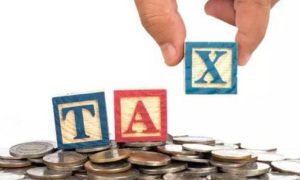While being self-employed provides one the flexibility in working, the tax aspects become slightly complex when compared with a salaried taxpayer.
India ranks 3rd in the world in terms of the number of freelancers. The COVID lockdowns have played a significant role in motivating many to explore their entrepreneurial side. While some indulged in traditional businesses such as selling home cooked food, skills training, programming, designing and animation, others took to gigs such as videography, fitness training and content creation.
While being self-employed provides one the flexibility in working, the tax aspects become slightly complex when compared with a salaried taxpayer.
Also Read : EPFO: Is there scope to increase PPF rates in future? Know why PPF interest rate remains unchanged
Taxation of self-employed individuals
Any income generated by a freelancer or a self-employed taxpayer would be taxable under the head ”Profits and gains from business and profession”. Taxpayers would need to offer to tax the profits earned by them post deduction of allowable expenses, or alternatively opt for presumptive taxation provided they meet the requisite conditions.
Read More:-Aeroflex Industries to raise Rs 350 crore via IPO; take a quick look
A resident individual who engaged in notified professions with total gross receipts less than INR 50 lakhs during the relevant tax year, can opt for presumptive taxation which provides that 50% or higher of the total gross receipts of the assessee in the previous year on account of such profession, shall be deemed to be the profits from such profession. If the taxpayer offers lesser profits than these for the relevant year, then he should maintain a proper book of accounts, get them audited and furnish an audit as prescribed in the Act.
Also Read : Bank Holidays In April 2023: For 15 Days Banks Are Closed; Check Full List Here
The following points should be kept in mind while filing the tax return:
1. Income tax return filing obligation: Taxpayers with total income during the relevant financial year which is more than the basic exemption limit i.e. INR 2.5 lakhs for FY 2022-23, have an obligation to file tax returns. Other individuals not meeting the above criteria can also file the tax return voluntarily.
2. Due date to file the tax return: The due date to file the tax return for these clauses of individuals for FY 2022-23 would be 31st July 2023, if the taxpayer is not required to get his books of accounts audited. However, the due date is in case of audit is 31st October 2023. The taxpayer can also file the tax return till 31st December 2023, with a late filing fee.
Also Read : Senior Citizen Savings Scheme: Invest Upto Rs 30 Lakh, Know Interest Rate And Key Details
3. Tax Rate: The tax rates for these employees would remain the same as for the salaried. Freelancers and self-employed individuals are eligible to opt for simplified tax regime. However, the choice once made is applicable for subsequent years with one time lifetime option to change. The taxes so computed would be increased by applicable surcharge (10% to 37%) and health and education cess at the rate of 4%. Currently, the low income group i.e. resident taxpayer having total income not more than INR 5 lakhs, enjoy a tax rebate of INR 12,500, i.e. no taxes are payable.
4. Requirement of a tax audit: If the gross annual turnover of a taxpayer’s business exceeds INR 1 crore, then the taxpayer would need to get his books audited. This threshold of INR 1 crore gets extended to INR 10 crore in case the taxpayers’ cash receipts are restricted to 5% or less of the total turnover and payments are restricted to 5% of the total payments. Audit is also mandated where the taxpayer carries on business specified for presumptive taxation but offers to tax income lower than the limits specified for therein and the income of an individual is more than the taxable limit during the relevant tax year. The threshold for professional receipts for such audit is INR 50 lakhs.
5. Tax Return Forms: ITR 3 or 4 is applicable for a taxpayer having income under the head “Business or profession”.
The taxpayer meeting the following norms should file tax return using ITR 4. Else, it will be ITR 3.
* Opted for presentative taxation
* Don’t have an income under the head “Capital gains”,
* Don’t have assets / income outside India
* No or only one house property
* Taxable income does not exceed INR 50 Lakhs during the financial year.
Tax authorities have already released offline income tax return Forms on February 10, 2023, for the filings of FY 2022-23. However, one has to wait for year end to release the online Forms / utility. Prior to FY 2021-22, individuals who opt for ITR 3, have to download the offline utility Form and then generate the XML file after filling the details as applicable to file the tax year. From FY 2021-22 onwards, individuals can fill the details in the income tax e-filing portal and file the tax return without downloading the utility.
6. Details required for filling the tax return: The taxpayer should keep the following details handy while filling the tax return.
* Personal information such as address, contact details, bank accounts, Aadhaar, etc.
Read More:-Canara Bank Hikes FD Interest Rate From Today — Check Latest Rates Here
* Details of gross receipts, expenses, other incomes and eligible tax saving investments made during the year and tax audit report, if any.
* Financial particulars such as assets (Indian and overseas), bank balances, cash balance, debtors, creditors, loans and advances, any other liabilities along with capital balance.
Read More:-Mumbai Airport To Close Both Runways On May 2 For 6 Hrs; Here’s Why
* Form 16, 16A, 26AS and Annual Information Statement (AIS) The taxpayer should look through Form 26AS and AIS from income tax e-filing portal and reconcile the income offered for tax and the details reflecting in the said Forms / statements. This will help reduce litigation in the long run.





































